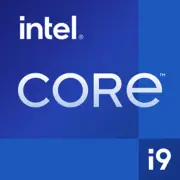Intel Core i9-9940X

Intel Core i9-9940X: In-Depth Processor Expertise for Professionals (2025)
Current analysis for those who seek power and multitasking
Key Features: Architecture and Performance
The Intel Core i9-9940X processor, released in 2019, remains in demand in niche scenarios due to its unique characteristics.
Architecture and Technology Process
- Codename: Skylake-X (Skylake architecture adapted for HEDT platforms).
- Technology Process: 14 nm (Intel 14nm++), which is considered outdated by 2025 but ensures stability.
- Cores and Threads: 14 cores / 28 threads — ideal for parallel tasks.
- Frequencies: Base — 3.3 GHz, Turbo Boost Max 3.0 — up to 4.4 GHz.
Key Features:
- Support for AVX-512 for accelerated scientific calculations and rendering.
- Unlocked multiplier for overclocking (requires powerful cooling).
- 20 MB L3 cache — minimizes latencies when working with large data sets.
Performance:
- Geekbench 6: 1328 (Single-Core) / 9787 (Multi-Core). For comparison, the Ryzen 9 7950X (2023) scores ~2200/22000, but the i9-9940X remains relevant for tasks where stability and AVX-512 support are critical.
Compatible Motherboards: Sockets and Chipsets
The LGA 2066 platform and Intel X299 chipset form the foundation for building a system.
Recommended Models (2025):
- ASUS ROG Rampage VI Extreme (price: ~$350–$450) — the best choice for overclocking, 8 DDR4 slots, Wi-Fi 6.
- MSI X299 Gaming Pro Carbon AC (~$250–$300) — a balance of price and functionality, ARGB lighting.
- Gigabyte X299 AORUS Ultra Gaming (~$280) — reliable VRM and 3 M.2 slots.
Selection Features:
- PCIe 3.0: No support for PCIe 4.0/5.0 — limits speed for modern SSDs and graphics cards.
- Number of PCIe lanes: Up to 44 lanes (including chipset lanes), allowing for multiple GPUs or NVMe drives.
- VRM Cooling: Due to a TDP of 165 W, it is critically important to choose boards with MOSFET heatsinks.
Supported Memory: DDR4 and Tuning Details
- Memory type: Only DDR4 (up to 256 GB, 8 slots).
- Frequencies: Officially — up to 2666 MHz, but overclocking to 3600+ MHz is possible on compatible boards.
- Modes: Quad-channel (4 channels) — modules must be installed in the correct slots for maximum bandwidth.
Example Configuration:
- For workstations: 64 GB (4x16 GB) DDR4-3200 CL16 (Corsair Vengeance LPX, ~$180).
- For enthusiasts: 128 GB DDR4-3600 (G.Skill Trident Z RGB, ~$400).
Power Supplies: Power Calculation
- Recommended power: From 750 W (considering overclocking and a top-tier GPU).
- Certification: 80+ Gold or Platinum (Corsair RM850x — $150, Seasonic PRIME TX-750 — $200).
Example:
A system with RTX 4080 (320 W) + i9-9940X (overclocked to 4.8 GHz) consumes ~600 W. A buffer of 150–200 W is necessary for peak loads.
Pros and Cons
Pros:
1. Multithreading performance: 28 threads handle rendering in Blender or code compilation faster than many modern mid-range CPUs.
2. AVX-512: Accelerates machine learning tasks (e.g., TensorFlow optimized for Intel).
3. Repairability: The LGA 2066 platform is actively supported in the secondary market.
Cons:
1. Power consumption: 165 W TDP — high heat generation and cooling requirements.
2. Outdated technology process: 14 nm compared to 5–7 nm of Ryzen 7000/8000.
3. No PCIe 5.0/DDR5: Limitation for upgrading to modern components.
Use Cases
1. Work Tasks:
- 3D rendering: In Autodesk Maya or Cinema 4D, the processor shows results on par with Ryzen 9 7900X.
- Video encoding: HandBrake or Adobe Premiere Pro — 4K rendering in 25–30 minutes (compared to 15–20 for Ryzen 9 7950X).
2. Gaming:
- In Full HD with RTX 4070 Ti — 120–140 FPS in Cyberpunk 2077 (high settings), but in CPU-bound scenarios, it lags behind Core i5-14600K.
3. Multimedia:
- Streaming in OBS + gaming — thanks to 28 threads, the load is distributed without lags.
Comparison with Competitors
1. AMD Ryzen 9 7950X ($550–$600):
- 16 cores / 32 threads, 5 nm, DDR5, PCIe 5.0.
- Geekbench 6 Multi-Core: ~22000 (2.2 times higher).
- Conclusion: Ryzen excels in energy efficiency, but i9-9940X is cheaper on the secondary market (~$300–$400).
2. Intel Core i9-13900K ($500–$550):
- 24 cores (8P+16E), DDR5, PCIe 5.0.
- Excels in single-threaded tasks (Geekbench 6 Single-Core: ~2700).
3. AMD Threadripper 3960X (24 cores, $700–$800 used):
- For those needing more PCIe lanes and memory, but at a higher price.
Practical Assembly Tips
1. Cooling:
- Liquid Cooling: NZXT Kraken X63 (280 mm) or Arctic Liquid Freezer II 360.
- Air Cooling: Noctua NH-D15 (maximum compatibility).
2. Case: Minimum 6 slots for fans (Lian Li Lancool III, Fractal Design Meshify 2).
3. Storage:
- System drive: Samsung 990 Pro 1 TB (PCIe 4.0, but works on PCIe 3.0).
- File storage: 2x4 TB HDD (RAID 1).
4. Network Solutions:
- Additional Wi-Fi 6E card (if not integrated into the motherboard).
Final Conclusion: Who Should Choose i9-9940X in 2025?
This processor is worth choosing if:
- You are a professional: Work with rendering, CAD, or scientific calculations, and AVX-512 is critically important.
- Budget is limited: Buying on the secondary market ($300–$400) is more advantageous than a new Ryzen 9.
- Stability is necessary: Proven X299 platform, supporting Windows 10/11 and Linux.
Don’t choose the i9-9940X if:
- You plan to upgrade to DDR5 or PCIe 5.0.
- You are looking for a CPU for gaming — modern Core i5/Ryzen 5 will be more efficient.
The Intel Core i9-9940X in 2025 is a tool for those who value a balance between price and multithreaded power, willing to compromise with an archaic technology process for specific tasks.
Basic
CPU Specifications
Memory Specifications
GPU Specifications
Miscellaneous
Benchmarks
Compared to Other CPU
Share in social media
Or Link To Us
<a href="https://cputronic.com/en/cpu/intel-core-i9-9940x" target="_blank">Intel Core i9-9940X</a>